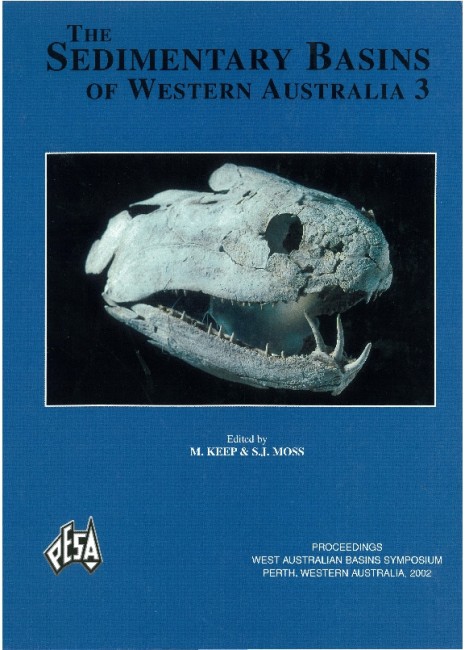Publication Name: The Sedimentary Basins of WA
Authors: F.E. Burns
Publication Volume: 3
Date Published: December 2002
Number of Pages: 36
Reference Type: Book Section
Abstract:
Trace fossil analysis is a key tool in the understanding of reservoir heterogeneity within the glauconitic Lower Cretaceous strata of the Carnarvon Basin. Twelve wells with core through the M australis and Mardie Greensandintervals in the Stag Field and Chervil area constitute the dataset for this study. The M australis sandstones in the Stag Field represent deposition within a wave- and storminfluenced, lower shoreface to inner shelf setting of
intermediate wave energy. The proximal lower shoreface is characterised by laminated and partially bioturbated sandstones, with mottled and Ophiomorpha-Skolithos ichnofabrics dominant. The highest diversity trace fossil assemblages occur within the highly bioturbated distal lower shoreface sandstones. 'Teichichnus zigzag'-, Rhizocorallium-and Palaeophycus-dominated ichnofabrics are abundant, characteristic of bioturbation at fairweather wavebase. Inner shelf strata are characterised by variable degrees of bioturbation, with muddy heterolithics displaying low degrees of bioturbation alternating with highly bioturbated sandstones. Teichichnus-, Palaeophycusand Planolites-dominated ichnofabrics are characteristic of these strata. Claystones deposited on the outer shelf are reworked by sparse bioturbation dominated by Chondrites and Zoophycos.
In the Chervil area, the Mardie Greensand is dominated by highly to intensely bioturbated, glauconitic sandstones, representing deposition within an inner and outer shelf setting. Significant stratal surfaces are
recognised through concentrations of Skolithos, Diplocraterion habichi and Thalassinoides. At both
flooding surfaces and downshift surfaces these firmground burrows cross-cut the background softground
ichnofabrics, are differentially cemented, and often contain coarse sand and pebble grade material, all suggesting that colonisation took place at a sediment starved surface (i.e. omission surface).
Sharp-based, quartz-rich sandstones are present in the Stag and Chervil areas. The presence of primary stratification, the dominance of Ophiomorpha and their abrupt juxtaposition over inner shelf strata indicate
deposition during forced regression.


